When it comes to the freedom struggle, both male and female Indian freedom fighters are remembered for their key roles. These courageous individuals fought against British rule, sacrificing their lives for the nation’s freedom. Learning about these national heroes of India can help students clear some of the toughest exams in India, such as the UPSC.
Moreover, reading about these national leaders of India can also help students excel in exams. Curious to learn more details? Look no further. Here is a comprehensive blog featuring over 20 Indian freedom fighters, including both male and female figures, along with their names and pictures.
This Blog Includes:
- Importance of Indian Freedom Fighters
- Male Freedom Fighters of India
- Female Freedom Fighters of India
- 20+ Famous Indian Freedom Fighters Name and Photos
- Mahatma Gandhi: The Father of the Nation
- Netaji Subhash Chandra Bose
- Sardar Vallabhbhai Patel: The Iron Man of India
- Pt. Jawaharlal Nehru: The First PM of India
- Lal Bahadur Shastri: Man of Peace
- Shaheed Bhagat Singh
- Dadabhai Naoroji: The Grand Old Man of India
- Ramachandra Pandurang Tope: Tantia Tope
- Bipin Chandra Pal: Father of Revolutionary Thoughts
- Lala Lajpat Rai: The Lion of Punjab
- Lokmanya Bal Gangadhar Tilak
- Ashfaqulla Khan: The Kakori Martyr
- Nana Saheb: Leader of the Revolt of 1857
- Shaheed Sukhdev Thapar
- Veer Kunwar Singh
- Shaheed Mangal Pandey
- Vinayak Damodar Savarkar: Veer Savarkar
- C.R. Rajagopalachari: Governor-General of the Dominion of India
- Ram Prasad Bismil: Freedom Fighter with a Poet’s Heart
- Chandra Shekhar Azad: An Indian Revolutionary Leader
- Lakshmi Bai: The Queen of Jhansi
- Begum Hazrat Mahal: India’s First Female Freedom Fighter
- Top Ten Indian Freedom Fighters and Their Legacy
- Famous Quotes by Indian Freedom Fighters
- FAQs
Importance of Indian Freedom Fighters
The contribution of Indian freedom fighters goes far beyond achieving independence in 1947. Their efforts shaped the social, cultural, and political identity of India. Here is why they are so important:
- Preserved National Identity: During colonial rule, the British tried to suppress Indian culture, language, and traditions. Freedom flights played an important role in protecting India’s identity and reminding people of their rich heritage, values, and history.
- Inspired Unity: India was a land of diversity with different religions, languages, and castes. Freedom fighters successfully brought people together under one banner of nationalism, showing that unity was the strength needed to fight oppression.
- Sacrifice for Nation: Many leaders gave up their careers, wealth, and family life, while countless others laid down their lives for the cause of independence. Their sacrifices remind us that freedom was not free but earned with immense struggle.
- Shaped Modern India: The vision of leaders like Mahatma Gandhi, Jawaharlal Nehru, Subhas Chandra Bose, and others helped frame the foundation of democracy, equality, and secularism. These values continue to guide India as a modern, independent nation.
- Source of Inspiration: The courage and determination of freedom fighters inspire today’s generation to work for the progress, unity, and integrity of India. Their lives are a constant reminder of patriotism and responsibility toward the nation.
Male Freedom Fighters of India
The national heroes of India played a crucial role in India’s struggle for independence. These brave leaders, with their dedication and sacrifices, fought against British colonial rule, inspiring generations to come. Here is a list of male freedom fighters of India:
- Mahatma Gandhi
- Kunwar Singh
- Vinayak Damodar Savarkar
- Dadabhai Naoroji
- Tantia Tope
- K. M. Munshi
- Jawaharlal Nehru
- Ashfaqulla Khan
- Sardar Vallabhbhai Patel
- Lala Lajpat Rai
- Ram Prasad Bismil
- Bal Gangadhar Tilak
- Bipin Chandra Pal
- Chittaranjan Das
- Bhagat Singh
- Lal Bahadur Shastri
- Nana Sahib
- Chandra Shekhar Azad
- C. Rajagopalachari
- Abdul Hafiz Mohamed Barakatullah
- Subhash Chandra Bose
- Mangal Pandey
- Sukhdev
- Ram Mohan Roy
- Satyendra Prasad Sinha
- Khudiram Bose
- Badruddin Tyabji
- Gopal Krishna Gokhale
- Rajguru
- Neta Ji Subhas Chandra Bose
- C. Subramaniam
- Surya Sen
- Veer Savarkar
Female Freedom Fighters of India
When it comes to the list of Indian freedom fighters, the role of women often gets overlooked. Many brave female members of society stood up against the British government and their rule. They led protests, organised processions, and gave empowering speeches to invoke the national hero in each member of the society. Here is a list of female freedom fighters of India:
- Rani Lakshmi Bai of Jhansi
- Annie Besant
- Madam Bhikaji Cama
- Kasturba Gandhi
- Aruna Asaf Ali
- Sarojini Naidu
- Usha Mehta
- Begum Hazrat Mahal
- Kamala Nehru
- Vijaya Lakshmi Pandit
- Jhalkari Bai
- Savitri Bai Phule
- Ammu Swaminathan
- Kittu Rani Chennamma
Also Read: Essay on Mahatma Gandhi
20+ Famous Indian Freedom Fighters Name and Photos
Every freedom fighter has a unique story that continues to inspire generations even today. Their courage, sacrifice and unwavering commitment play an important role in changing the future of our country. Here is the complete list of 20+ famous Indian freedom fighters with names, photos, and major achievements:
| Famous Indian Freedom Fighter | Major Achievements |
| Mahatma Gandhi | Father of the Nation Civil Rights Activist in South Africa Satyagraha Civil Disobedience Movement Quit India Movement |
| Kunwar Singh | Indian Rebellion of 1857 |
| Vinayak Damodar Savarkar | Leading figures of the Hindu Mahasabha and formulator of Hindu Nationalist Philosophy |
| Dadabhai Naoroji | Unofficial Ambassador of India |
| Tantia Tope | Indian Rebellion of 1857 |
| K. M. Munshi | Founder of Bharatiya Vidya Bhavan |
| Jawaharlal Nehru | Preeminent fighter First Prime Minister of India |
| Ashfaqulla Khan | Member of Hindustan Republican Association |
| Sardar Vallabhbhai Patel | Civil Disobedience Movement and Quit India Movement Unification of India |
| Lala Lajpat Rai | Reorganised the Hindustan Republican Association (HRA) under its new name of Hindustan Socialist Republican Association |
| Ram Prasad Bismil | Founding Member of Hindustan Republican Association |
| Bal Gangadhar Tilak | The Maker of Modern India Swadeshi Movement |
| Rani Lakshmi Bai | Indian Rebellion of 1857 |
| Bipin Chandra Pal | Father of Revolutionary Thoughts Swadeshi Movement |
| Chittaranjan Das | Reorganized the Hindustan Republican Association (HRA) under its new name of Hindustan Socialist Republican Association |
| Begum Hazrat Mahal | Indian Rebellion of 1857 |
| Bhagat Singh | One of the Most Influential Revolutionaries |
| Lal Bahadur Shastri | White Revolution Green Revolution Second Prime Minister of India |
| Nana Sahib | Indian Rebellion of 1857 |
| Chandra Shekhar Azad | Last Governor-General of India Leader of the Indian National Congress |
| C. Rajagopalachari | Last Governor-General of India Leader of the Indian National Congress |
| Abdul Hafiz Mohamed Barakatullah | Revolutionary Writer |
| Subhash Chandra Bose | World War II Indian National Congress |
Mahatma Gandhi: The Father of the Nation
Born on 2nd October 1869, Mohandas Karamchand Gandhi is revered as the Father of the Nation for his immense sacrifices for India. He not only ushered India towards freedom, but he also became an inspiring figure for many independence struggles and rights movements across the world. The greatest Indian freedom fighter, popularly called Bapu, Gandhi, introduced the principle of non-violence in India.
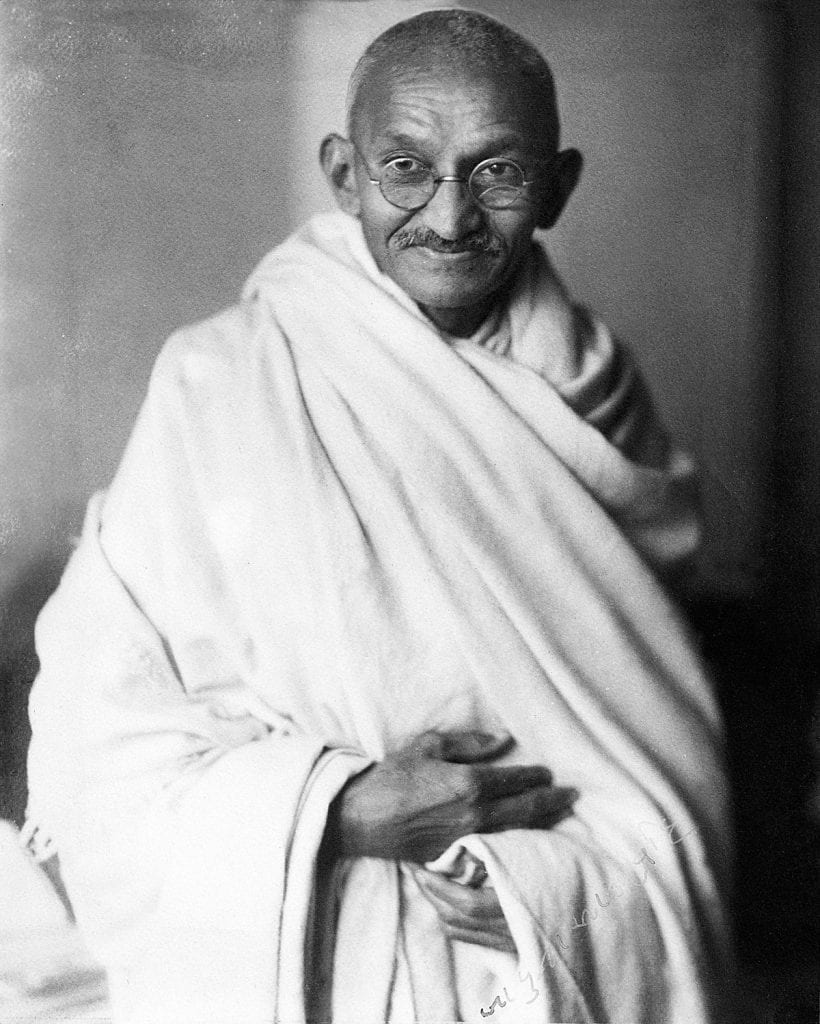
According to him, independence was to be achieved through a combination of non-violent movement and non-cooperation with the British. The historic Non-Cooperation movement, the Dandi March, and the Quit India movement were all started under his leadership.
- Born: 2 October 1869, Porbandar
- Full name: Mohandas Karamchand Gandhi
- Assassinated: 30 January 1948, New Delhi
- Famously Known As Bapu
Netaji Subhash Chandra Bose
One of the greatest freedom fighters and national leaders of India that history witnessed was none other than Subhas Chandra Bose. He was born on 23rd January 1897. He was a radical nationalist, and his ultimate patriotism carved a hero out of him. Bose disagreed with the ideals of non-violence promoted by Gandhi, instead believing that only armed revolt could oust the British from India.
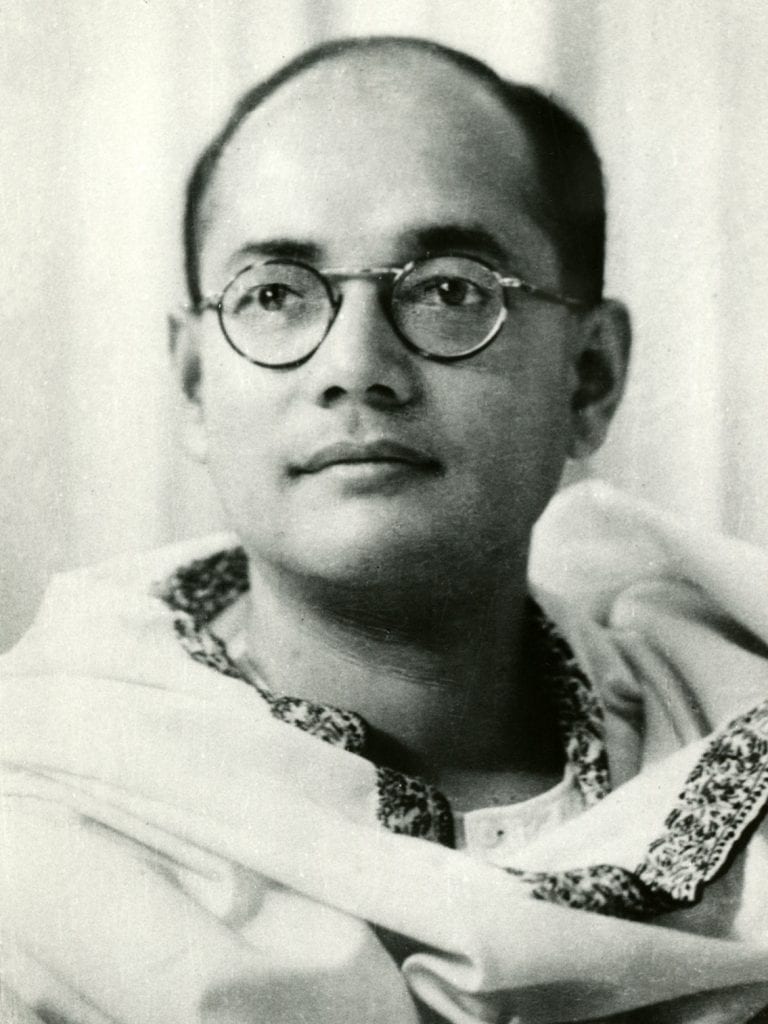
The founder of the Forward Bloc, he escaped the eyes of the British to reach Germany during the Second World War. He raised the Indian National Army (INA) and, with Japanese help, was able to free a portion of Indian territory from the British in Manipur, but was ultimately defeated due to the Japanese surrender to the British. Although he is believed to have died in a plane crash in 1945, his death remains shrouded in mystery to date.
- Born: 23 January 1897, Cuttack
- Famously Known As Netaji
- Died: 18 August 1945, Taipei, Taiwan
- Education: Scottish Church College (1918), Presidency University
Sardar Vallabhbhai Patel: The Iron Man of India
Vallabhbhai Patel was born on 31st October 1875. A senior leader of the Indian National Congress, he made an immense contribution to the Indian freedom struggle as one of the most influential and strong-minded Indian freedom fighters. He was one of the most influential leaders of Gujarat, who organised peasant movements against the British based on Gandhi’s ideals of non-violence.
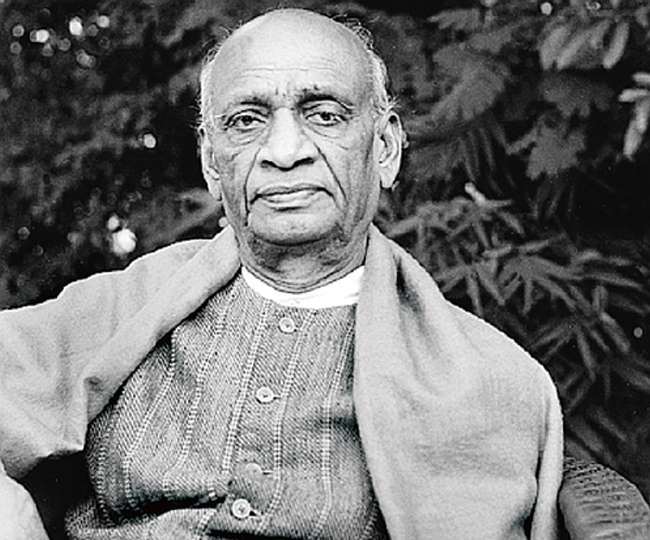
One of the first Congress leaders and national leaders of India to have accepted the British plan of partition for India, he is remembered as the “Iron Man of India” for his crucial role in integrating the princely states into the Indian Union. His efforts led to the integration of around 562 princely states. After independence, he served as the first home minister and deputy prime minister of India.
- Born: 31 October 1875, Nadia
- Died: 15 December 1950, Mumbai
- Full name: Vallabhbhai Jhaverbhai Patel
- Famously Known As Sardar, the Iron Man Of India
Pt. Jawaharlal Nehru: The First PM of India
Pandit Jawaharlal Nehru was born on 14th November 1889. He was the only child of Motilal Nehru and Swarup Rani Nehru. Nehru was one of the most renowned barristers and national leaders of India, known for his intellectual capabilities, which soon made him one of the greatest politicians India had ever seen.
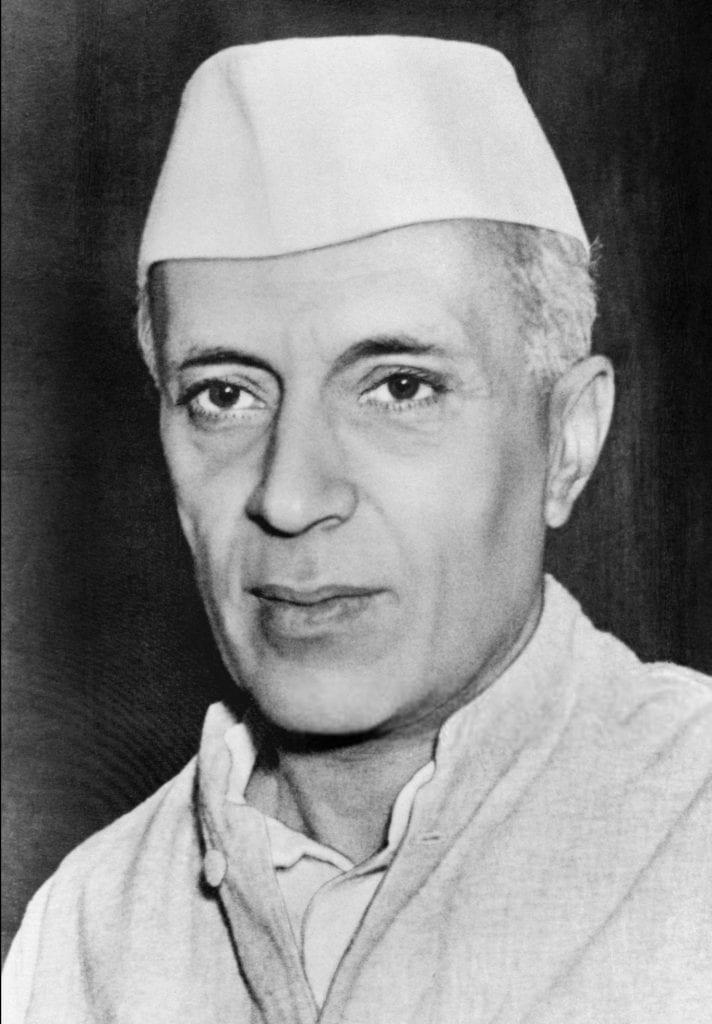
Nehru, under the approval of Gandhi, his mentor, rose to become one of the most dominant figures in Indian politics from the 1930s onwards. Nehru, after much deliberation, accepted the partition proposal for India in 1947 and took the oath as the First Prime Minister of India after attaining independence. His birthday on 14 November is widely celebrated in India as Children’s Day.
- Born: 14 November 1889, Prayagraj
- Died: 27 May 1964, New Delhi
- Spouse: Kamala Nehru (m. 1916–1936)
- Parents: Motilal Nehru
- Famously Known As Chacha Nehru, Pandit Nehru
Lal Bahadur Shastri: Man of Peace
Lal Bahadur Shastri was born on 2nd October 1904 in the state of Uttar Pradesh and was a great national leader of India. He was conferred with the title of Shastri, which in English is termed a Scholar. At the age of only sixteen, he left his studies to join the non-cooperation movement at the call of Gandhi. Later, he graduated with a first-class degree from Kashi Vidyapeeth, a national institution of higher education inaugurated by Gandhi.
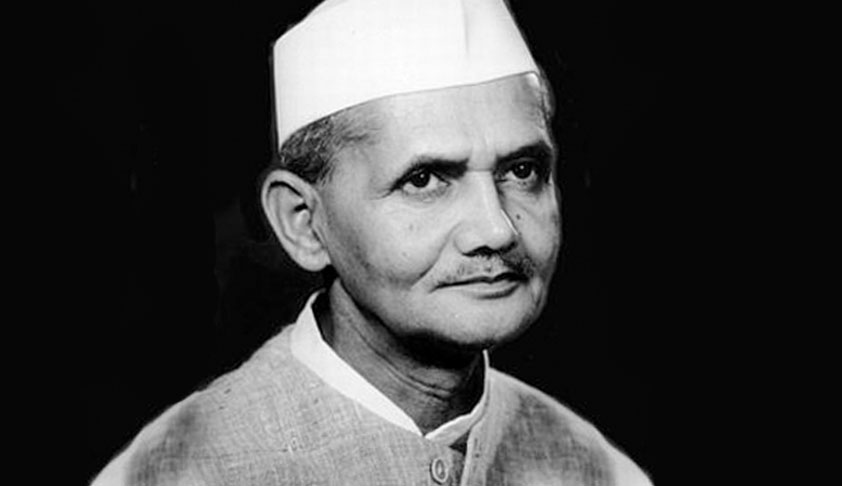
He was one of the most proactive Indian freedom fighters who participated in various movements such as the Quit India movement, the Civil Disobedience movement, and other satyagrahas led by Mahatma Gandhi. Lal Bahadur Shastri was incarcerated by the British for considerable periods during his lifetime. After attaining independence, he first became the Home Minister and later was made the Prime Minister of India in 1964.
- Born: 2 October 1904, Mughalsarai
- Died: 11 January 1966, Tashkent, Uzbekistan
- Party: Indian National Congress
- Famously Known As: Man of Peace
Shaheed Bhagat Singh
Bhagat Singh is one of the most iconic Indian freedom fighters, known for his radical approach and unmatched courage. Born in 1907 in Punjab, his revolutionary spirit was ignited by the death of Lala Lajpat Rai at the hands of British police. As a prominent member of the Hindustan Socialist Republican Association (HSRA), Bhagat Singh was committed to direct action to overthrow British rule in India.
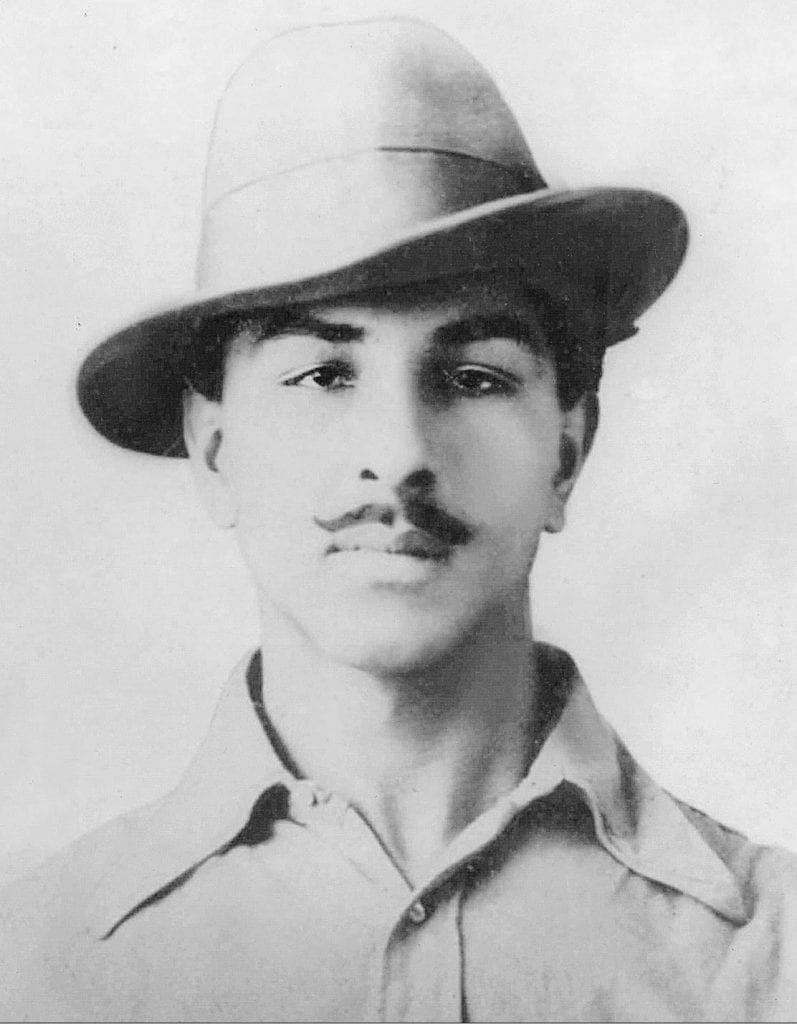
One of his most notable acts was the 1929 bombing of the Central Legislative Assembly, aimed at protesting the Simon Commission. Although it was non-lethal, the act was a powerful statement against colonial oppression. Bhagat Singh’s involvement in the Jallianwala Bagh Massacre protests further exemplified his dedication to India’s independence.
Despite his young age, Bhagat Singh became one of the greatest national leaders of India of all time. His bravery during his trial and ultimate sacrifice in 1931 left an indelible mark on India’s struggle for freedom. Today, Indian freedom fighters like Bhagat Singh are remembered as national heroes whose legacies continue to inspire future generations.
- Born: 28 September 1907, Banga, Pakistan
- Died: 23 March 1931, Lahore Central Jail, Lahore, Pakistan
- Education: National College, Lahore, National College of Arts, Dayanand Anglo-Vedic Schools System
- Famously Known As: Shaheed Bhagat Singh
Dadabhai Naoroji: The Grand Old Man of India
Born on 4th September 1825, he was a Mathematics and Natural Philosophy professor. He was educated at Elphinstone College in Bombay. He turned towards politics later in life and became very active in the field. His opinion was unfavourable and he felt that the British rule would leave and cause irreparable damage to the Indian economy.
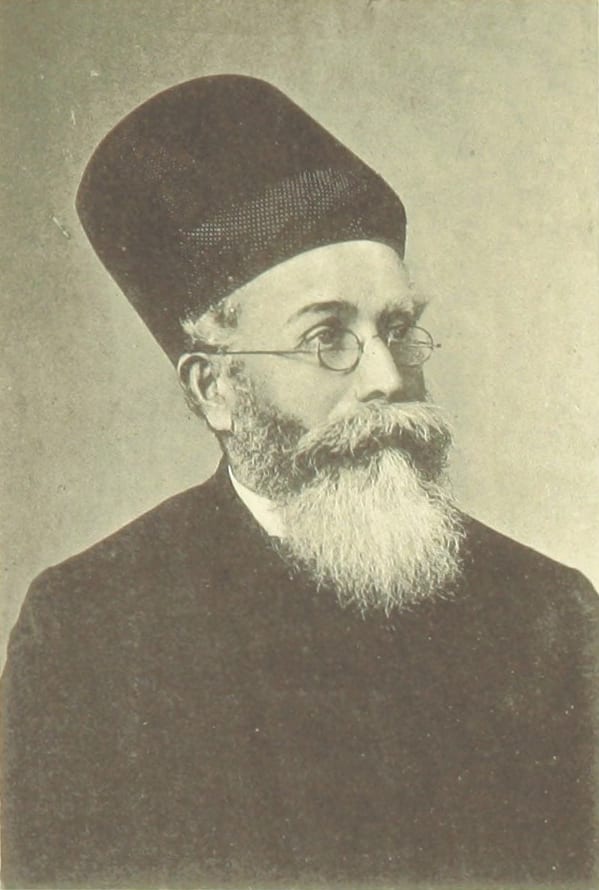
In the years 1886, 1893, and 1906, Dadabhai Naoroji had the privilege of presiding over the annual sessions of the Indian National Congress. This later led to the nationalist movement in India. The popular writings of these national leaders of India include the article named Poverty and Un-British Rule in India (1901). In this article, he was of the strong belief and opinion that India was taxed at a very high rate and all of India’s wealth was being drained to England.
- Born: 4 September 1825, Navsari
- Died: 30 June 1917, Mumbai
- Organisations founded: Indian National Congress, Zoroastrian Trust Funds of Europe, National Congress, London Indian Society
- Famously Known As: ’Grand Old Man of India’ and ‘Unofficial Ambassador of India’
Ramachandra Pandurang Tope: Tantia Tope
Tantia Tope was one of the famous revolutionaries of the Rebellion of 1857. Born in 1814, he led his soldiers to fight against the dominance of British rule. He made General Windham leave Kanpur and helped Rani Lakshmi Bai reinstate Gwalior. He was among the greatest national leaders of India.

- Born: 1814, Yeola
- Died: 18 April 1859, Shivpuri
- Full name: Ramachandra Pandurang Tope
Bipin Chandra Pal: Father of Revolutionary Thoughts
Bipin Chandra Pal was a revolutionary born in 1858 during the Biggest revolution against the British Army. He was a significant part of the Indian National Congress and encouraged the abandonment of foreign goods.

He formed a trio with Lala Lajpat Rai and Bal Gangadhar Tilak to be known as Lal-Bal-Pal, where they executed several revolutionary activities.
- Born: 7 November 1858, Habiganj District, Bangladesh
- Died: 20 May 1932, Kolkata
- Education: St. Paul’s Cathedral Mission College, Presidency University
- Famously Known As: Father of Revolutionary Thoughts
Lala Lajpat Rai: The Lion of Punjab
Lala Lajpat Rai, famously known as Punjab Kesari, or the “Lion of Punjab”, was one of the extremist members of the Indian National Congress. These great national leaders of India formed a trio with Bipin Chandra Pal and Bal Gangadhar Tilak to be known as Lal-Bal-Pal, where they executed several revolutionary activities. He led the Punjab Protest against the Jallianwala Incident and the Non-Cooperation Movement.

He fought against the Simon Commission Protest and lost his life because of a lathi charge by the Britishers.
- Born: 28 January 1865, Dhudike
- Died: 17 November 1928, Lahore, Pakistan
- Famously Known As: Punjab Kesari
Lokmanya Bal Gangadhar Tilak
Bal Gangadhar Tilak, popularly known as “Lokmanya,” meaning “accepted by the people as their leader,” played a key role in India’s freedom movement. The British authorities referred to him as “The Father of Indian Unrest” due to his revolutionary ideas. He was a remarkable freedom fighter of India born in 1856, and was among the earliest supporters of Swaraj (self-rule).
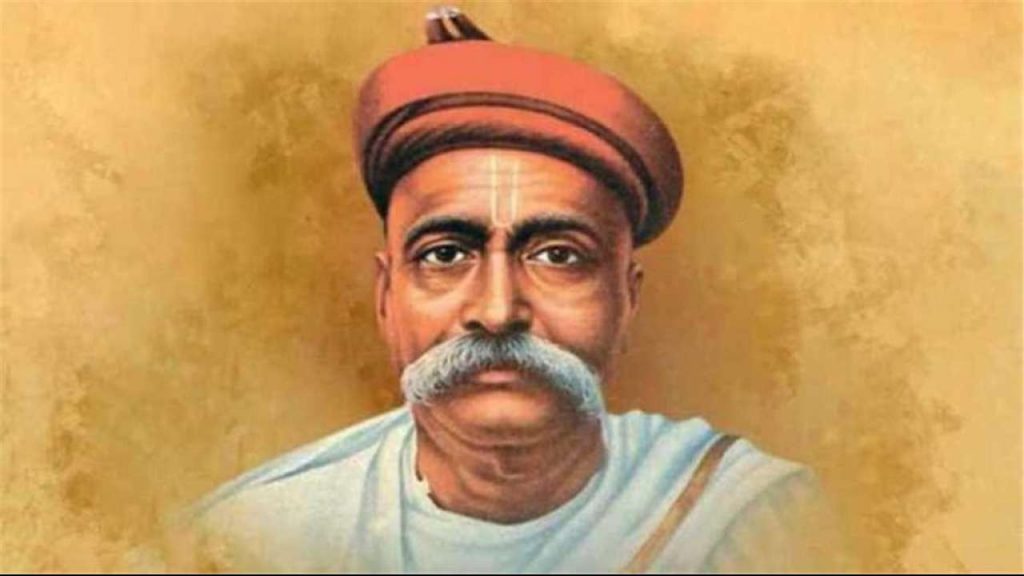
He was a bold advocate for awakening India’s national consciousness. Famously known for his quote, ‘Swaraj is my Birthright. He published several rebellious newspapers and built schools to defy British Rule. He was the third member of the Lal-Bal-Pal along with Lala Lajpat Rai and Bipin Chandra Pal.
- Born: 23 July 1856, Chikhali
- Died: 1 August 1920, Mumbai
- Famously Known As Lokmanya Tilak
Ashfaqulla Khan: The Kakori Martyr
This great freedom fighter of India was born on 22nd October 1900, in the district of Shahjahanpur, Uttar Pradesh. Ashfaqulla Khan grew up with the non-cooperation movement going on at the forefront, led by Mahatma Gandhi. Just when he was a young gentleman, Ashfaqulla Khan became acquainted with Ram Prasad Bismil. He was one of the main conspirators in the Chauri Chaura incident, which took place in Gorakhpur.
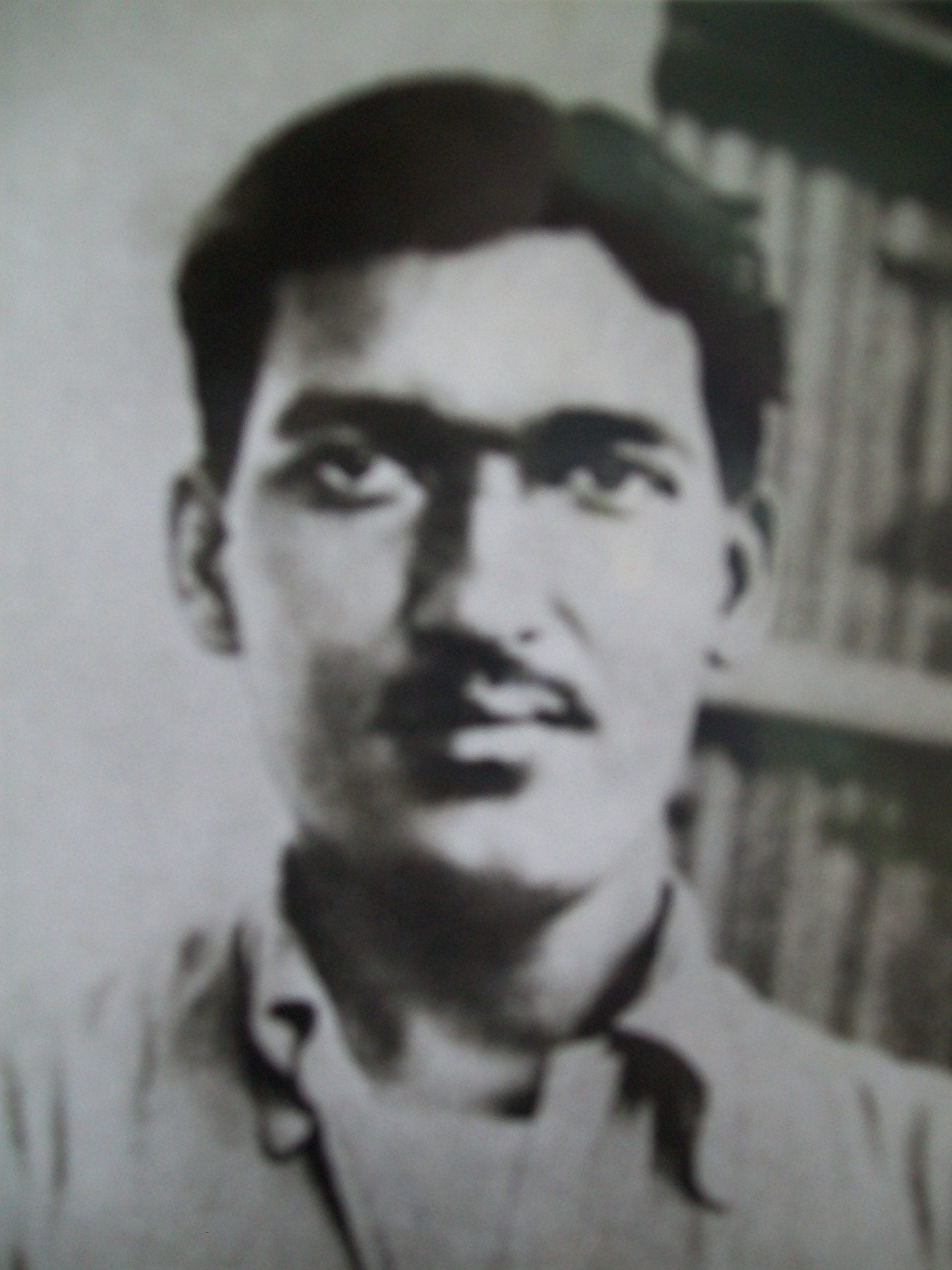
He was a strong advocate of independence and wanted the British to leave India at any cost. Ashfaqulla Khan, a popular freedom fighter of India known for his true friendship with Bismil, was sentenced to death for the Kakori train robbery. It was popularly known as the Kakori Conspiracy of 1925.
- Born: 22 October 1900, Shahjahanpur
- Died: 19 December 1927, Faizabad
- Organisation: Hindustan Socialist Republican Association
- Famously Known As: Ashfaq Ulla Khan
Nana Saheb: Leader of the Revolt of 1857
Nana Govind Dhondu Pant, commonly known as Nana Sahib, was born in Bithoor (Kanpur District), Uttar Pradesh, in May 1824. He was the eighth Peshwa of India’s Maratha Empire. Balaji Bajirao was another name for him. When Chattrapati Shahu died in 1749, he left the Maratha Empire to the Peshwas. He did not have an heir to his realm; therefore, he nominated the valiant Peshwas as his heir.

Nana Sahib, as king of the Maratha Empire, made significant contributions to the development of Pune. During the rule of this freedom fighter of India, Poona was transformed from a small village to a metropolis. He redesigned the city by constructing new districts, temples, and bridges. Having said that, Sahib was a key contributor to the 1857 revolt, leading a group of enthusiastic rebels. He overran the British soldiers in Kanpur and endangered the British camp by murdering the survivors. However, after defeating Nana Saheb and his men, the British were able to retake Kanpur.
- Born: 19 May 1824, Bithoor
- Full name: Dhondu Pant
- Died: 1859, Naimisha Forest
- Disappeared: July 1857 in Cawnpore (now Kanpur), British India
- Famously known as Nana Sahib
Shaheed Sukhdev Thapar
Sukhdev, who was born in 1907, was a brave revolutionary and a key member of the Hindustan Socialist Republican Association. Without a doubt, he was one of the most revered figures of the Indian freedom struggle. This freedom fighter of India collaborated closely with his colleagues Bhagat Singh and Shivram Rajguru.
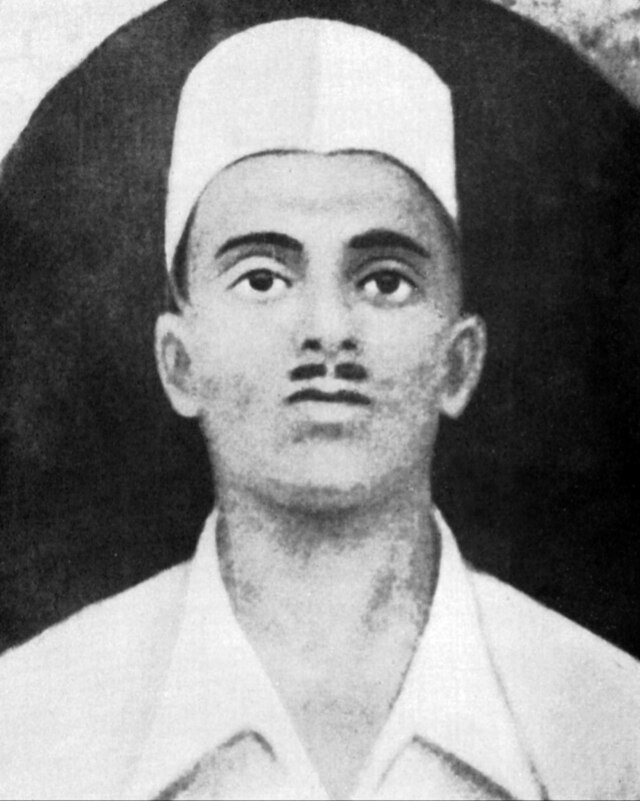
He was accused of being involved in the assassination of British officer John Saunders. Unfortunately, at the age of 24, he was caught and hanged with Bhagat Singh and Shivaram Rajguru on March 23, 1931, in Punjab’s Hussainwala (now in Pakistan).
- Born: 15 May 1907, Ludhiana
- Died: 23 March 1931, Lahore, Pakistan
- Education: National College of Arts, Lahore
- Member of: Hindustan Socialist Republican Association (HSRA)
Also Read: 25 Best Slogans on Independence Day for Students in English
Veer Kunwar Singh
Veer Kunwar Singh was born in April 1777 to the Maharaja and Maharani of Jagdispur (now in Bhojpur District, Bihar) to the Maharaja and Maharani of Jagdispur. His name is often lost amid the other more renowned names of the Revolt. Nonetheless, his contribution to the First War of Independence was enormous. Kunwar Singh led the uprising in Bihar.
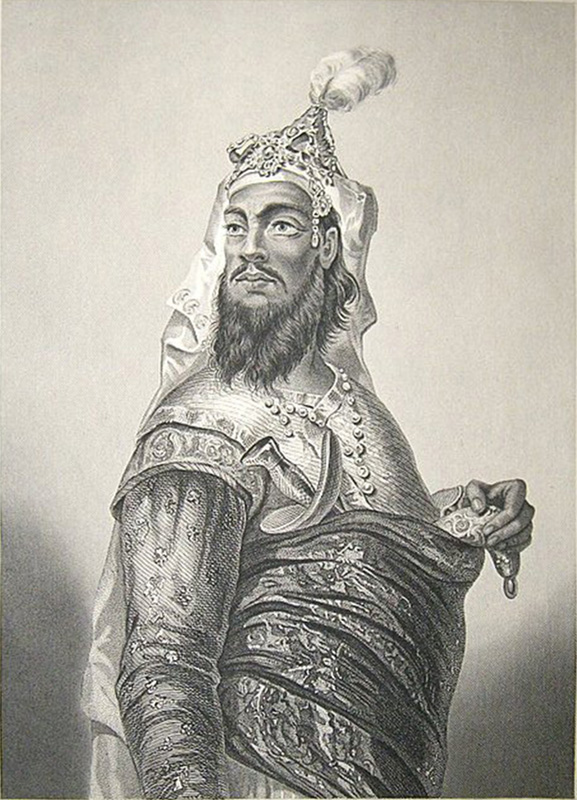
On July 25, 1857, he gained command of the sepoys stationed at Danapur at the age of nearly 80. Kunwar Singh took over Azamgarh in March 1858. (now in UP). He then went home and commanded a successful fight near Jagdispur on July 23rd. The British, headed by Captain Le Grand, were beaten in this fight despite Kunwar Singh being the fact that Kunwar Singh was severely hurt.
- Born: November 1777, Jagdishpur
- Died: 26 April 1858, Jagdishpur
- Full name: Babu Veer Kunwar Singh
- Famously Known as Veer Kunwar Singh
Shaheed Mangal Pandey
Mangal Pandey, a well-known Indian freedom fighter, is usually recognised as the forerunner of the 1857 revolt against the British, which is regarded as India’s first battle of independence. As a soldier in the East India Company’s army’s 34th Bengal Native Infantry (BNI) regiment, he led the sepoy mutiny, which eventually led to the 1857 uprising. When a new Enfield rifle was launched in India in the mid-1850s, his biggest dispute with the business began.

The rifle’s cartridges were rumoured to be lubricated with animal fat, specifically cow and pig fat. As a result of the cartridges’ use, the Indian troops rebelled against the corporation since it violated their religious beliefs. Pandey and his fellow sepoys rose up in revolt against the British commanders on March 29, 1857, and even attempted to kill them. He was arrested and sentenced to death on April 18. However, anticipating a sepoy uprising, British officials executed him 10 days prematurely on April 8.
- Born: 19 July 1827, Nagwa
- Died: 8 April 1857, Barrackpore
- Occupation: Sepoy (soldier)
- Cause of death: Execution by hanging
- Known for: Indian independence fighter
Vinayak Damodar Savarkar: Veer Savarkar
Vinayak Damodar Savarkar was born in 1883 and spent the rest of his life as a dedicated activist and Indian revolutionary. He established the Abhinav Bharat Society and the Free India Society. Swatantryaveer Savarkar was his given name.
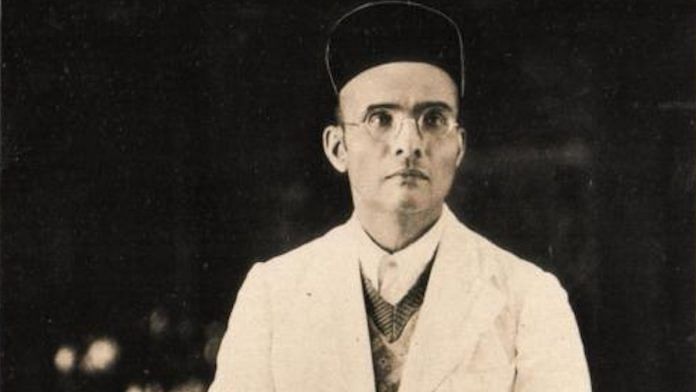
As a writer, he also penned a piece named ‘The Indian War of Independence,’ which provided wonderful information about the 1857 Indian revolt.
- Born: 28 May 1883, Bhagur
- Died: 26 February 1966, Mumbai
- Party: Hindu Mahasabha
- Education: City Law School (1909), Fergusson College (1902–1905), Wilson College, Mumbai, Mumbai University
C.R. Rajagopalachari: Governor-General of the Dominion of India
Chakravarti Rajagopalachari BR, born in 1878, was a lawyer by profession before joining the Indian National Congress in 1906 and rising through the ranks to become a recognised Congress legislator. He was popularly known as Rajaji or C.R. Rajagopalachari, a towering figure in contemporary Indian politics.
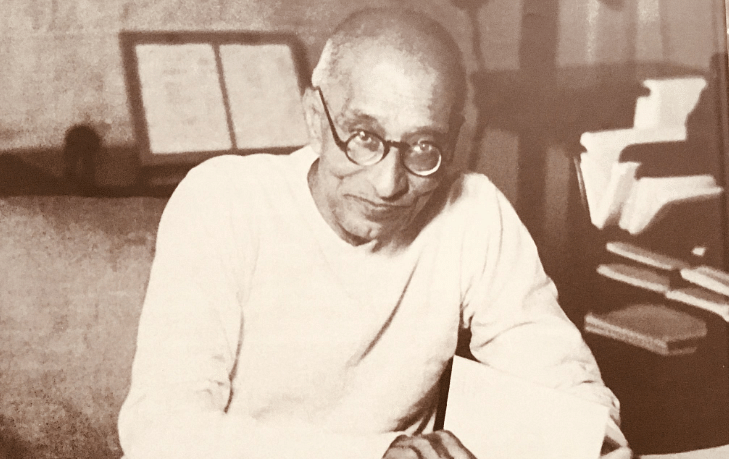
He was a member of the Indian National Congress during the pre-independence era and a staunch supporter of Mahatma Gandhi. He was a fervent devotee. He also actively engaged in Lajpat Rai’s Non-Cooperation Movement.
- Born: 10 December 1878, Thorapalli
- Died: 25 December 1972, Chennai
- Education: Presidency College, Bangalore Central University (1894), Bangalore University
- Famously known as CR, Mango of Krishnagiri, Rajaji
- Awards: Bharat Ratna
Ram Prasad Bismil: Freedom Fighter with a Poet’s Heart
“Desh hit paida huye hai
Desh par marr jayenge
Marte marte desh ko
zinda magar kar jayenge”
Ram Prasad Bismil was one of the most notable Indian revolutionaries who fought British colonialism and made it possible for the nation to breathe the air of freedom after aeons of struggle against the imperial forces, with a desire for freedom and revolutionary spirit reverberating in every inch of his body and poetry.

Bismil, who was born in 1897, was a respected member of the Hindustan Republican Association alongside Sukhdev. He was also a participant in the infamous Kakori train heist, for which the British government condemned him to death.
- Born: 11 June 1897, Shahjahanpur
- Died: 19 December 1927, Gorakhpur Jail, Gorakhpur
- Cause of death: Execution by hanging
- Organisation: Hindustan Socialist Republican Association
Chandra Shekhar Azad: An Indian Revolutionary Leader
Chandra Shekhar Azad, born in 1906, was a close companion of Bhagat Singh in the independence movement. He was also a member of the Hindustan Republican Association and the bravest and daring Indian freedom fighter against the British authorities.

After murdering several opponents during a battle with British forces, he shot himself with his Colt pistol. He promised he’d never be caught alive by the British.
- Born: 23 July 1906, Bhavra
- Died: 27 February 1931, Chandrashekhar Azad Park
- Full name: Chandrashekhar Tiwari
- Education: Mahatma Gandhi Kashi Vidyapith
Lakshmi Bai: The Queen of Jhansi
Rani Lakshmibai, widely known as the Queen of Jhansi, was born in 1828. She was one of the fiercest members of the Revolution of 1857. She inspired many women across the country to fight for the freedom of India, and to date, she inspires several women to fight for their rights.
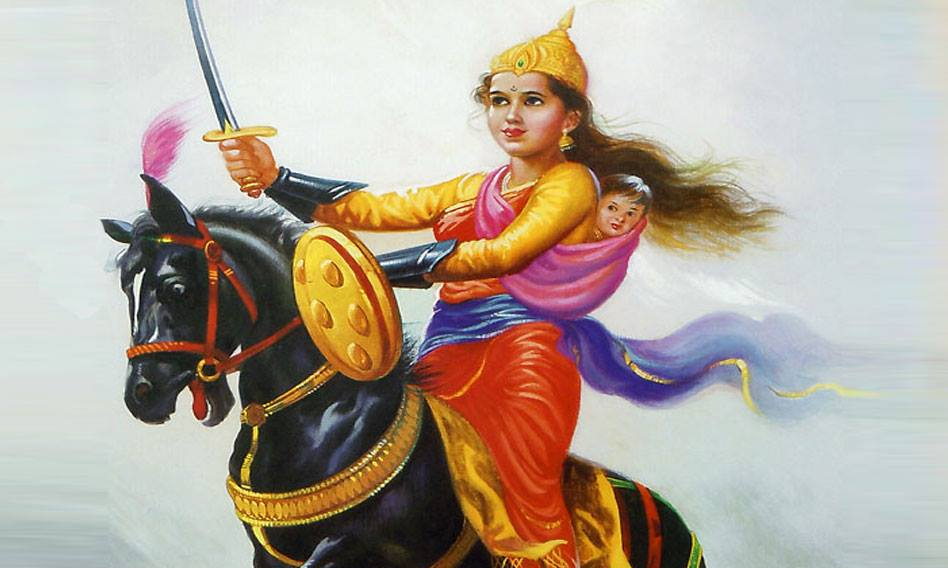
She defended her palace with her newborn child in the year 1858, which was invaded by the British Forces.
- Born: 19 November 1828, Varanasi
- Died: 18 June 1858, Gwalior
- Full name: Manikarnika Tambe
- Famously Known As: Manu
Begum Hazrat Mahal: India’s First Female Freedom Fighter
A woman of many roles – a mother, a queen, and most importantly, a symbol of resistance. Born to a family with a very weak economic background, her maiden name was Muhammadi Begum. Sold at a very young age to the royal harem as an attendant, Begum Hazrat Mahal got a proper training in etiquette. She was given the new name of ‘Mahak Pari’ in the Pari Khana and later became one of the wives under a contract with Nawab Wajid Ali Shah. One of her biggest contributions to the freedom struggle was uniting Hindus and Muslims to come together as one force to fight the British. She proved her mettle as a leader.

She even played an important role in encouraging and motivating women to step out of their homes and join the struggle for independence. She believed that women could do anything in the world, fight any battle, and come out as winners.
- Born: 1820, Faizabad
- Died: 7 April 1879, Kathmandu, Nepal
- Famously Known As: Begum of Awadh
Top Ten Indian Freedom Fighters and Their Legacy
The legacy of the top ten Indian freedom fighters and others is deeply ingrained in the nation’s history. Their sacrifices and ideologies paved the way for the free, democratic India we live in today. From the leaders of the Indian National Congress to the revolutionary fighters who took up arms against the British, the freedom struggle was a collective effort involving countless individuals from all walks of life.
So far, you’ve learned about some of the greatest national leaders of India. Now, let’s explore famous quotes by Indian freedom fighters, presented through images.
Also Read: 30 Personality Interview Questions with Answers
Famous Quotes by Indian Freedom Fighters
Here’s a famous revolutionary quote from Bhagat Singh:

Here’s a famous and inspirational quote from Mahatma Gandhi:

Here’s a powerful and motivational quote from Lal Bahadur Shastri:

The Indian freedom fighters were the true architects of independent India. Whether through non-violence or armed struggle, their determination made it possible for us to live in a free nation today. Remembering their stories not only honors their sacrifices but also inspires us to contribute positively to our country’s growth. India’s independence was not a gift but the result of centuries of struggle and sacrifice. It is our duty as citizens to uphold the values of unity, justice, and equality that these brave heroes stood for.
Find Other Relevant Blogs Here!
FAQs
Ans: India’s struggle for independence was marked by the efforts of numerous brave individuals who fought against British colonial rule. Some notable Indian freedom fighters include:
Mahatma Gandhi
Kunwar Singh
Vinayak Damodar Savarkar
Dadabhai Naoroji
Tantia Tope
Subhas Chandra Bose
Sardar Vallabhbhai Patel
Rani Lakshmibai
Sarojini Naidu
Tantya Tope and more
Ans: Here are ten of the most influential freedom fighters in India:
1. Mahatma Gandhi
2. Rani Lakshmi Bai
3. Sarojini Naidu
4. Vallabhbhai Patel
5. Mangal Pandey
6. Bhagat Singh
7. Subhash Chandra Bose
8. Veer Savarkar
9. Lokmanya Tilak
10. Chandrashekhar Azad.
Ans: Rani Lakshmi Bai was a great indian women freedom fighter and one of the most fierce members of the Revolution of 1857.
Ans: The greatest Indian freedom fighter, Mahatma Gandhi is called the Father of the Nation.
Ans: The five notable female freedom fighters in India who played crucial roles in the struggle for independence are:
1. Sarojini Naidu
2. Rani Lakshmibai
3. Begum Hazrat Mahal
4. Durga Bhabhi
5. Aruna Asaf Ali
This was everything about the famous Indian freedom fighters. We hope this blog on Indian freedom fighters made you realise the struggle we went through to get Independence. Which one is your personal favourite freedom fighter? If you want to know more about other Famous Personalities then visit our General Knowledge page!
-
Super 🙂👌👌 it helped me so much tq for this
-
Thank you, Rakesh!
-
-
There are many freedom fighters names.
-
Thanks for the suggestion.
-

 One app for all your study abroad needs
One app for all your study abroad needs



















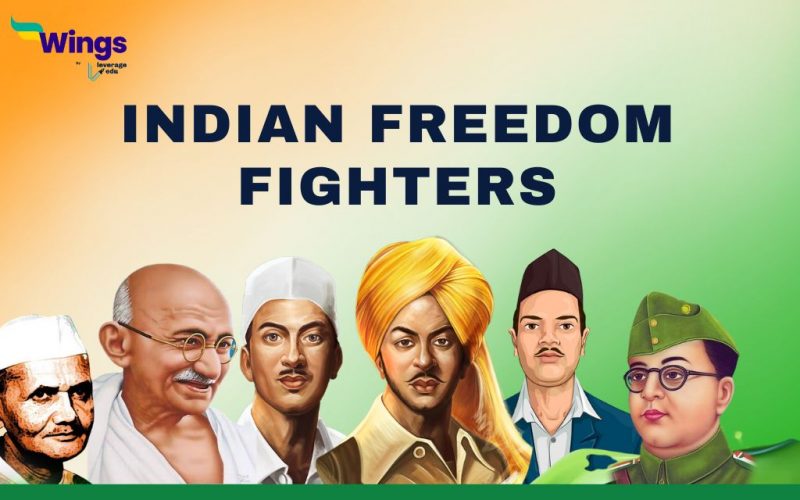

 60,000+ students trusted us with their dreams. Take the first step today!
60,000+ students trusted us with their dreams. Take the first step today!


15 comments
Super 🙂👌👌 it helped me so much tq for this
Thank you, Rakesh!
There are many freedom fighters names.
Thanks for the suggestion.
It was a very good information .
Thanks!
Nyc to get information about Indian freedom fighters
Thank you for the comment, Dhana!
It’s good and usefull
Hi, Sharanya!
Thanks for reading.
You can also learn more about: Best Books on Indian History
Revolutions in India You Must Know About
Bal Gangadhar Tilak, the Father of Indian Unrest!
Let’s Celebrate 72 Historic Years of India on This Republic Day 2021!
A Long Walk to Freedom Class 10
I salute for all the Indian freedom fighters.jay hind Jay Bharat.Bande mataram
It was very helpful for me to write some paragraphs on republic day.
Hi Aastha!
Glad to know that we could help. We have few other interesting blogs on Republic day such as Essay on Republic Day Check them out!
Hi Aastha!
Glad to know that we could help. We have a few other interesting blogs on Republic day such as Essay on Republic Day Check them out!
Hi Aastha! Happy to know that we could help. 🙂